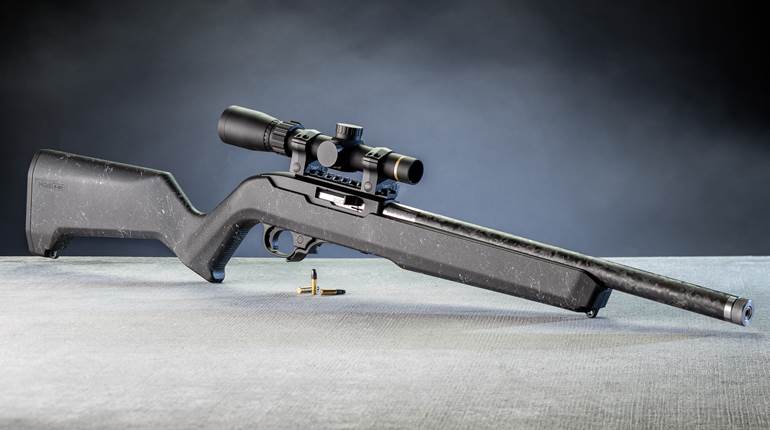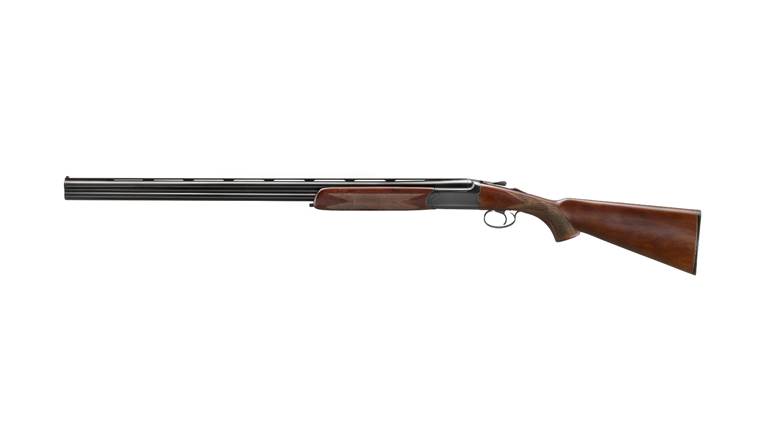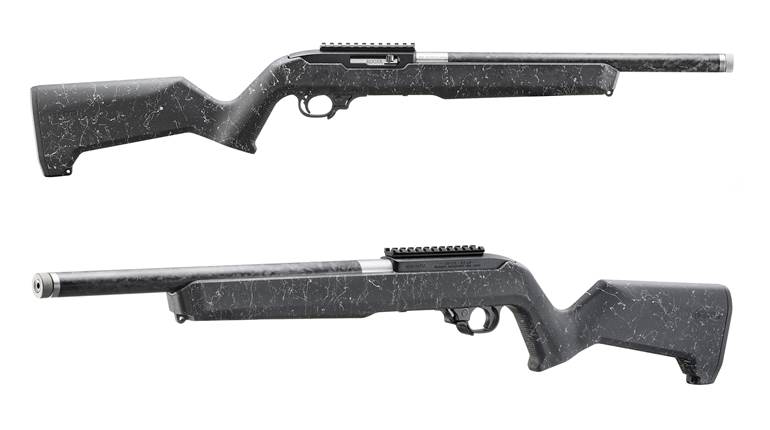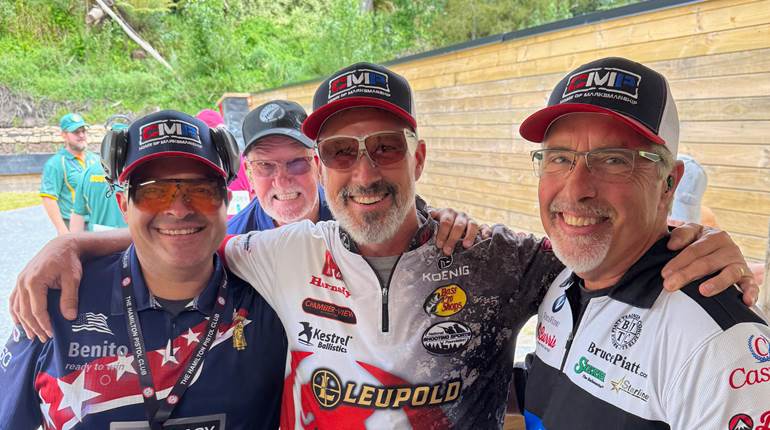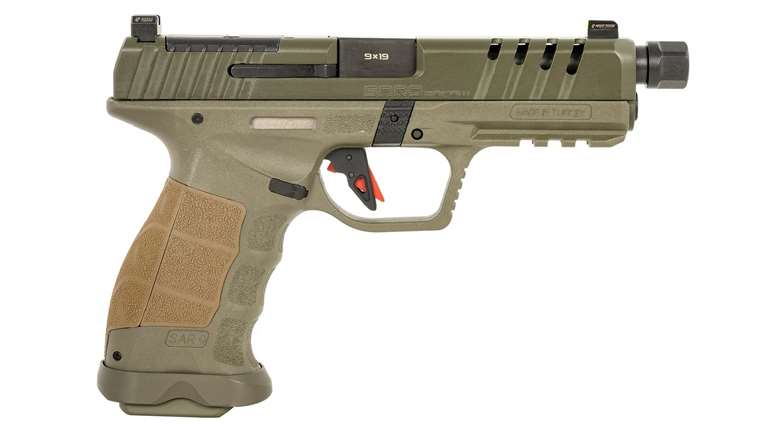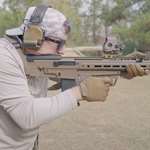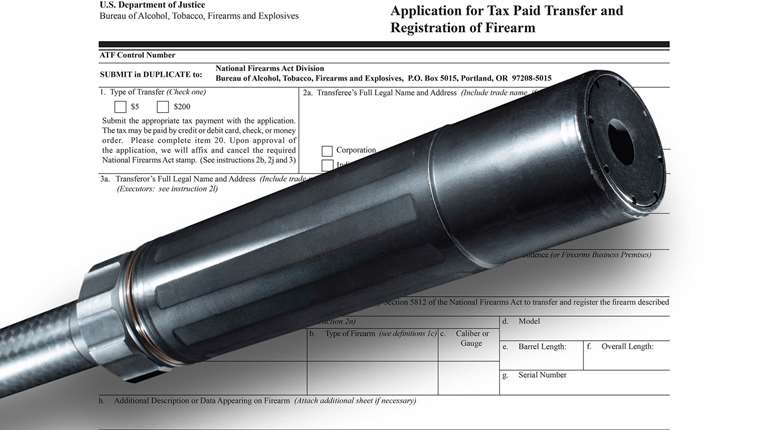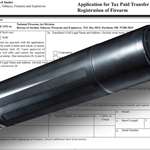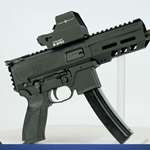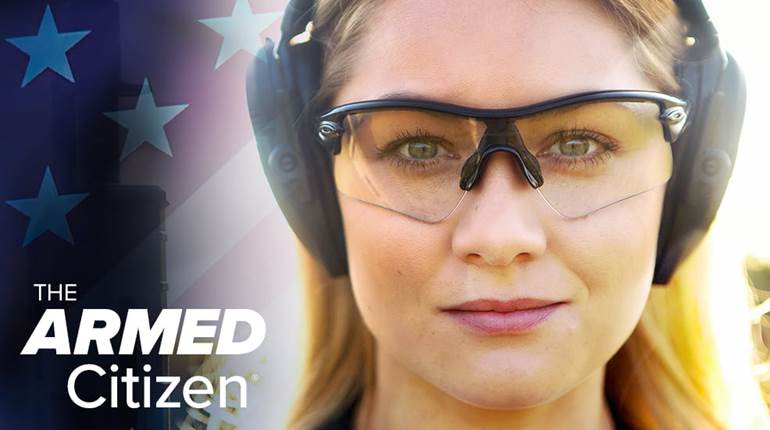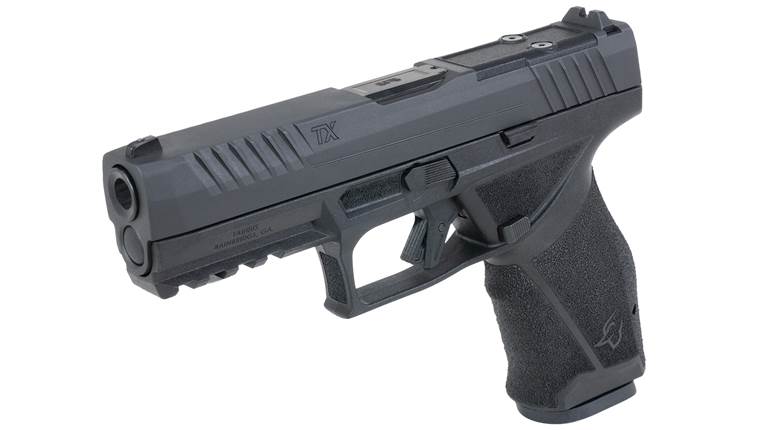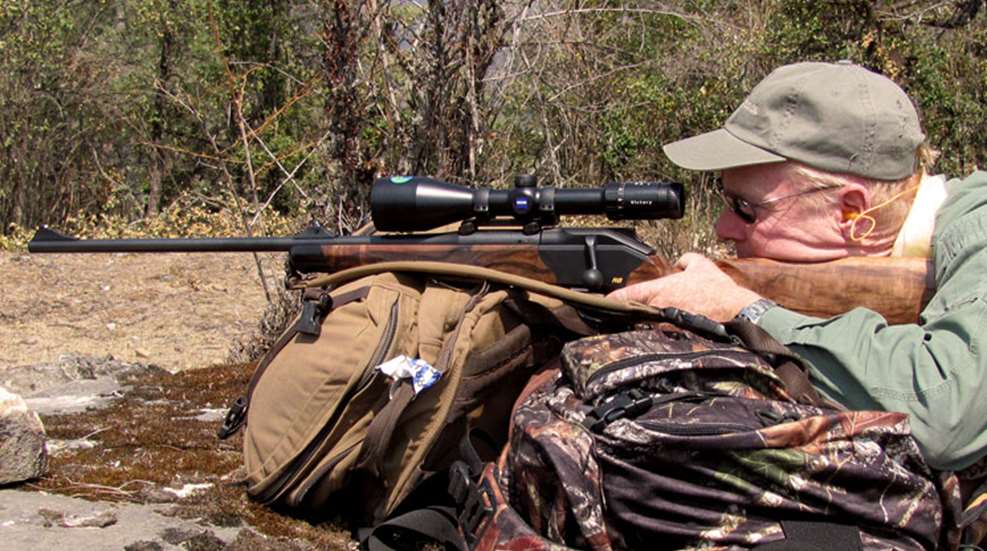
To some degree this is a matter of tradition: We shake with our right hands (although who started that tradition is beyond me). I have a theory that a lot more than 15 percent of the population is left-eye dominant, this based on years of checking eye dominance with beginning shooters. Regardless, we shoot long guns from one shoulder or the other, and we aim rifles and handguns and point shotguns with just one eye. Whether your kindergarten teacher decided you were right-handed or left-handed, shooting is best done with the dominant eye if at all possible—and as the other eye remains important for depth perception and peripheral vision—the best-case scenario is learning to shoot everything, including scoped guns, with both eyes open.
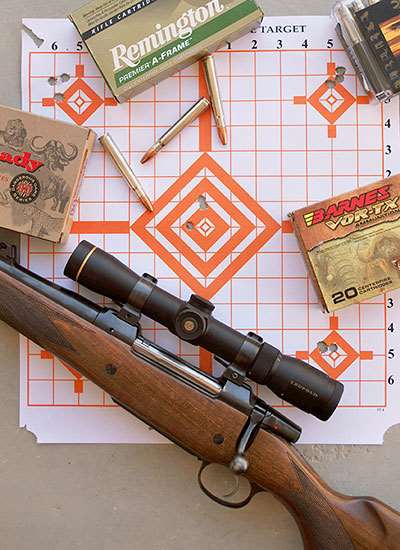
Our eyes often change quite a bit as we grow older (usually not for the better). I have always been strongly left-eye dominant, and I’m totally left-handed, but recent testing has shown my left-eye dominance is not nearly as strong as it once was. That said, with a half-century of shooting experience under my belt I’m not about to switch unless and until I have to, but this does happen. Over the years I’ve known a number of people who had vision problems severe enough in one eye that they had to switch sides. This is not easy—and the older you are the more difficult it probably is—but it can be done.
There’s a rumor that I was once right-handed, but after I lost all my guns in a burglary about 35 years ago I decided to switch to left-hand guns so that nobody would steal them. Uh, no, that’s not the way it went, although there are misguided grains of truth to the story. For obvious reasons it’s true that left-hand guns are a lot harder to sell than right-hand guns, but I doubt many thieves would be that discriminating.
I learned to write, bat, throw a ball, the works, left-handed, so when I started shooting there was no ambiguity. However, in the 1960s there were very few mirror-image left-hand actions available, so I learned to shoot with right-hand guns. The first left-hand rifle I ever owned was a Savage Model 110 in 7 mm Rem. Mag. acquired in about 1979. I did get cleaned out in a bad burglary a couple years later, and most of the rifles taken wore right-hand actions.
Proper-Sided Actions
That was indeed a turning point. And as I rebuilt my battery, I made a conscious decision to shift to left-hand actions. It was certainly not because I thought them less likely to be purloined, nor even for speed of operation. Hey, I grew up reaching over the top to work a right-hand bolt. Today, as a gunwriter, I have little choice but to use and write about a lot of right-hand guns, and I can still run them just fine. But, properly, it is not just handier, but also safer for righties to shoot right-hand guns and southpaws to shoot left-hand guns.
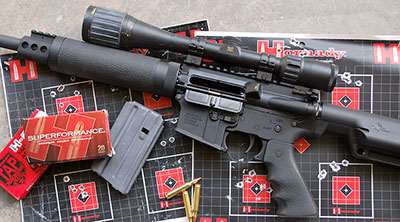
In the case of a catastrophic failure, a left-handed shooter using a right-hand action is almost certain to sustain injuries, perhaps severe, to his or her face. It is absolutely true that catastrophic failures are extremely rare. In a lifetime of shooting I’ve never had it happen to me, and I’ve seen only three or four firearms “blow up.” It’s ugly when it happens, but it isn’t common. Safety, not ease of operation, is the primary reason why we lefties should use mirror-image actions.
If you have a child, spouse or any other beginning shooter who happens to be left-handed (or left-eye dominant), please start them out not just properly but safely with a true left-hand firearm, or at least something genuinely bilateral. Most of us will go through a lifetime of shooting without a catastrophic failure, but it just takes one.
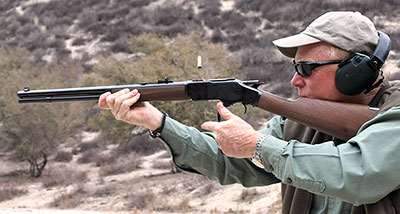
In the days before left-hand actions were as available as they are today, a common solution was to convert a right-hand bolt-action to a left-hand bolt. I’ve had a couple of conversions, a Model 70 and a Springfield. It’s a difficult and time-consuming gunsmithing job. The bolt handle is shifted to the left side for ease of operation and the rotation of the bolt is reversed. Because left-hand actions are much more available today, I don’t know anybody who will even touch such a job, but understand it was always just a partial answer. The action still ejects to the right, and that’s where bad stuff is gonna go if something breaks loose.
This is equally true of any and all actions that eject to the right. On the surface, all lever-actions, slide-actions, and semi-automatics appear to be operable by both left- and right-handed users, but that applies to operation only, not to safety. So, can you think of such firearms as “almost bilateral”? Yes, I do, and I shoot them. I love Marlin lever-actions, Savage 99s, Winchester 88s and, in shotguns, Winchester Model 12s—and everybody loves ARs. But ease of operation and safety for left-handed shooters are not the same thing. These are all essentially right-hand actions that can be operated from either side. The only truly bilateral actions I can think of are: top-eject lever-actions; bottom-eject slide-actions; falling-block single-shots; break-open actions; and some bullpups.
I’m not exactly sure how to characterize the Blaser R8. A modular system, it can be used either right-handed or left-handed simply by switching out the bolt. My wife Donna and I are both left-handed, so in our hands our R8 is very much a left-hand gun, but in a sick little twist I’ve been thinking about getting a right-hand bolt so our right-handed kids can shoot it safely.
Limited Selection
Other than the few genuine bilateral actions, the best and safest choices for left-handed shooters are true mirror-image actions. The selection is always going to be limited, but that is partly the fault of we, albeit repressed and downtrodden but also fickle and whiny, southpaws. If we could get together and actually promise manufacturers our solid 15 percent of the market, plus perhaps convince another 5 percent among the left-eye dominants to forego their right sides, we could probably have any guns we wanted.
For instance, there are now more than 90 large and small shops making ARs. One has to assume something approaching 15 percent of the folks buying all those ARs are left-handed. And yet I am aware of only two shops manufacturing left-hand ARs: Rock River and Stag Arms. Browning, to its everlasting glory, actually makes mirror-image left-hand versions of its semi-automatic BAR in both short and long actions. These are the only true left-hand semi-automatic rifles I am aware of, and all three firms should be selling more of them than they can possibly make but tell me they are not.
Across the board, at the production level, you will generally find that most manufacturers of bolt-action rifles offer a basic selection of mirror-image left-hand actions. Caliber and configuration options usually don’t span the entire line. In fact, in most cases the choices will be somewhat “vanilla”: Basic bolt guns in .270 Win., .30-’06 Sprg., .300 Win. Mag., and so forth—only the most popular chamberings in the most common configurations.
At the premium level there tends to be more options. Weatherby, for instance, has long made its entire Mark V series in both right- and left-hand versions, but the economically priced Vanguard is a right-hand-only rifle. Cooper will make darn near anything in both right- and left-hand, as will Dakota. For a short time the Winchester Model 70 was manufactured in a left-hand version, but no longer; and despite years of pleading, badgering and cajoling, I have yet to get Kimber off the dime on a left-hand action, although the old Kimber of Oregon specialized in left-hand rifles.
Especially if your tastes run toward the exotic, you likely can’t find a reasonably priced left-hand rifle in the exact chambering you want. So you have a choice: Make do with a perfectly suitable “Plain Jane” cartridge or consider rebarreling. I’ve rebarreled many guns over the years. The cost of adding a decent-quality barrel for the desired cartridge to a left-hand rifle—chambering, installation, crowning and finishing—will often be considerably less than the price of a premium-quality rifle in the desired, nonstandard chambering.
Left-Hand Options
So the important thing may well be the action design, and there are indeed lots of choices. The majority are push-feed, which is neither good nor bad; it just is. One thing a serious left-handed rifle shooter can attest to: Push-feeds work. We’ve been using push-feed, left-hand bolt-actions from Browning, Remington, Savage and Weatherby forever. They feed upside down and sideways, and you’ve heard little whining from us lefties about the vaunted superiority of the controlled-round-feed system because Mauser-clone, controlled-round-feed, left-hand actions have always been scarce.
At significant cost there are mirror-image Mauser actions and, as I said, from the 1980s until 2005 Winchester made a small number of mirror-image Model 70s. The most available left-hand, controlled-round-feed action, however, is the Ruger M77 Mark II. Ruger has always been really good about offering a lot of chamberings, but not in left-hand configuration. Mostly its left-hand bolt-action selection has been limited, but sometimes the company surprises us. Its left-hand Hawkeye in .375 Ruger is one of very few over-the-counter .375s with a controlled-round-feed action, and it also offers its M77 Scout Rifle in a left-hand version. CZ’s big 550 Safari Magnum is offered in more chamberings than any other large-caliber rifle on the market, but not if you’re a lefty. You can have the left-hand version in any cartridge you want, so long as it’s .375 H&H Mag. Still, that’s a good start, isn’t it?
Geez, fellow lefties, quit whining. Do you know how many years went by before there was any over-the-counter left-hand rifle chambered for a dangerous game cartridge? It was only a decade ago that, for television purposes, I really needed a left-hand Ruger M77 in a buffalo-capable cartridge. No problem! I took a left-hand .300 Win. Mag. and rebarreled it to the wildcat .416 Taylor. But in hindsight, two years later they came out with the .375 Ruger, followed by the .416 Ruger, so I sort of wish I’d waited.
Winners And Champions
I’ll be honest: If I were a manufacturer and had to choose between the large right-hand market and the small left-hand market, it wouldn’t be a hard choice, especially at the start. But I’m thankful that some makers see things differently. On the custom and semi-custom level, for instance, most shops offer a full range of left-hand options and a few tend to cater to us southpaws. Pennsylvania gunmaker Mark Bansner told me that, in his previous business as Bansner’s Ultimate Rifles, his left-hand orders exceeded 20 percent. His new firm, Legendary Arms Works, now in the first year of production with its Model 704, doesn’t yet offer a left-hand action, but since Bansner himself is left-handed, I’m pretty sure we’ll see one eventually.
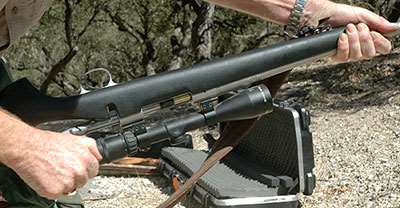
To me the perennial champions of the left-hand cause are Browning, Remington, Ruger and Savage. With Browning, caliber options come and go—the A-Bolt has been available in left-hand in .338 Win. Mag. and .375 H&H Mag.—but if they don’t sell, they can’t stay in the line. Currently the left-hand A-Bolt is offered in 10 chamberings, and among them are true rarities for left-hand rifles, such as 6.5 mm Creedmoor and both .270 and .300 WSM. But don’t forget the BAR in both Short Trac and Long Trac. Browning looks after us pretty well.
Remington is another favorite among lefties. Regrettably, the slick little Model Seven has never been available in left-hand bolt, but the Model 700 has been almost since the beginning. I suspect that more custom and semi-custom left-hand rifles have been based on the Model 700 action than all other actions combined. Availability of production left-hand Model 700s has also been, though never perfect, consistently good. As a writer, I try very hard not to pick favorites; but, over the years, I’ve used Remington Model 700 actions more than anything else simply because of their availability in left-hand.
Ruger introduced its mirror-image M77 Mark II with just a few chamberings. The left-hand selection has never been large, but it has included key offerings such as the RCMs and the .375 Ruger. The Gunsite Scout is available in several left-hand models. And let’s not forget the bilateral Ruger No. 1, which historically has been offered in a huge number of chamberings. But, to my thinking, what takes Ruger from a left-hand winner to a true champion is that its economically priced American is now available in a left-hand version in both short and long action. That’s rare!
The ultimate champion of the left-hand cause, however, simply has to be Savage. No, not all of the many variations of the old Savage Model 110 action will ever be available in left-hand, but year in and year out its left-hand selection has remained extremely robust. Today you can find everything from basic big game and varmint rifles in a good assortment of chamberings all the way to full-up heavy tactical rigs in .338 Lapua Mag. And Savage even has a varmint/target setup with the safety of a left-hand loading port, but the convenience of a right-hand bolt. Think about it. Whether on the bench or in a prairie dog town, you’re steady over the rest, and all you have to do is work the action with your supporting—but over a rest, fairly useless—right hand. I thought that was a trade secret: Over a steady rest that’s the way I usually work a right-hand bolt!












